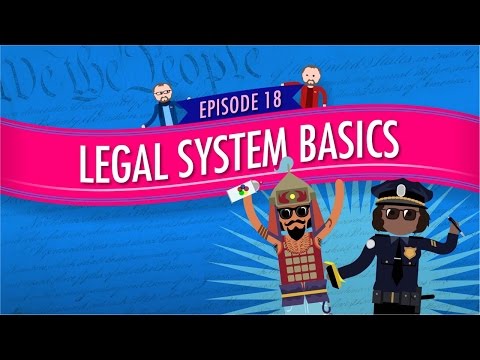
Welcome to our informative article on “Understanding the Distinction: Civil Wrongs versus Crimes in the United States Legal System”! We are here to provide you with a clear and detailed explanation of these fundamental concepts in US law. However, it is important to note that while we strive to provide accurate information, it is always wise to cross-reference with other sources or consult a legal advisor for specific legal advice or guidance.
So, let’s dive into the fascinating world of civil wrongs and crimes! In the United States legal system, there is a crucial distinction between civil wrongs and crimes. Understanding this distinction is essential for comprehending the various legal consequences that may arise from different types of harmful behavior.
Civil wrongs, also known as civil offenses or torts, are actions that harm individuals or their property. These wrongs may include negligence, intentional harm, or breaches of contract. The primary goal of civil law is to compensate the injured party for the harm they have suffered. It aims to restore them to the position they were in before the harm occurred, as much as possible.
📋 Content in this article
In civil cases, the burden of proof is typically lower than in criminal cases. The injured party, known as the plaintiff, must demonstrate by a preponderance of the evidence that the defendant is responsible for the harm caused. If the plaintiff succeeds, they may be awarded monetary damages or other remedies ordered by a court.
Crimes, on the other hand, are actions that violate criminal laws enacted by legislative bodies at the federal, state, or local level. Unlike civil wrongs, crimes harm society as a whole rather than just individual victims. Criminal offenses range from minor infractions, such as a traffic violation, to serious felonies like murder or robbery.
In criminal cases, the burden of proof is higher, requiring proof beyond a reasonable doubt.
Understanding the Distinctions: Civil Cases versus Criminal Cases in the Legal System
Understanding the Distinction: Civil Wrongs versus Crimes in the United States Legal System
In the United States legal system, it is crucial to understand the distinction between civil wrongs and crimes. While both involve legal violations, they are separate categories with different consequences and procedures. This article aims to provide a clear understanding of these distinctions.
Civil Wrongs:
Civil wrongs, also known as civil cases, refer to disputes between individuals or entities, such as individuals, businesses, or organizations. These cases typically involve a violation of someone’s rights or a breach of a legal duty. The primary goal of a civil case is to compensate the injured party for the harm suffered, rather than punishing the wrongdoer.
Here are some key points to understand about civil wrongs:
Understanding the Distinction: Civil Wrongs vs. Criminal Wrongs in US Law
Understanding the Distinction: Civil Wrongs vs. Criminal Wrongs in US Law
In the United States legal system, it is essential to understand the fundamental difference between civil wrongs and criminal wrongs. While both types of wrongs involve harm or injury, they are distinct in their nature, purpose, and consequences.
Civil Wrongs:
Civil wrongs, also known as civil offenses or civil torts, are actions that result in harm or injury to individuals or their property. These wrongs are typically resolved through civil litigation, where the injured party seeks compensation for the harm they have suffered. Unlike criminal cases, civil wrongs do not involve punishment through imprisonment or fines imposed by the government.
Criminal Wrongs:
Criminal wrongs, also referred to as crimes, are offenses against society as a whole. The primary purpose of criminal law is to maintain public order, deter criminal behavior, and punish individuals who commit crimes. Criminal wrongs are prosecuted by the government and can result in severe penalties, including imprisonment, fines, probation, or community service.
Understanding the Distinction: Civil Wrongs versus Crimes in the United States Legal System
Introduction:
In the United States legal system, it is crucial to comprehend the distinction between civil wrongs and crimes. While both involve wrongful actions, they differ significantly in terms of purpose, burden of proof, and potential consequences. Staying current on this topic is of utmost importance as it allows individuals to navigate legal matters effectively. However, it is essential to verify and cross-reference the content provided here, as laws may vary based on jurisdiction and may change over time.
Civil Wrongs:
Civil wrongs, also known as torts, refer to wrongful acts committed against individuals or their property. These wrongs typically result in harm, either physical or emotional, and often involve a breach of duty owed by one party to another. The main purpose of civil liability is to compensate the injured party for their losses rather than to punish the wrongdoer.
Some common examples of civil wrongs include personal injury claims such as negligence, medical malpractice, defamation, and product liability. In these cases, the burden of proof lies with the injured party who must demonstrate that the defendant’s actions or negligence caused the harm suffered. The standard of proof in civil cases is usually “preponderance of the evidence,” meaning that it is more likely than not that the defendant’s actions caused the harm.
If found liable for a civil wrong, the defendant may be required to compensate the injured party financially, usually through monetary damages. These damages aim to restore the injured party to the position they were in before the wrongful act occurred.
Crimes:
Crimes, on the other hand, are wrongful acts committed against society as a whole. They are offenses against the state and are prosecuted by government authorities rather than private individuals. The primary purpose of criminal law is to punish and deter criminal behavior, maintain public order, and protect society.
